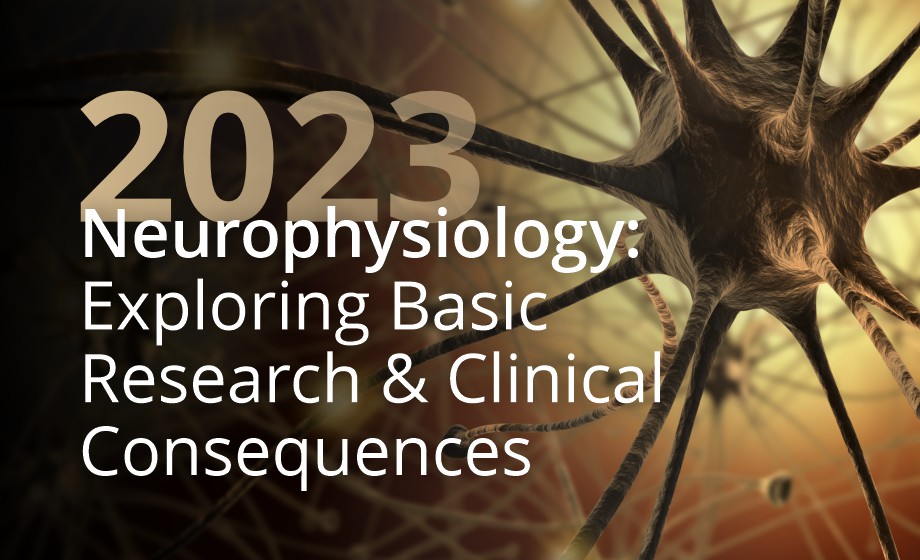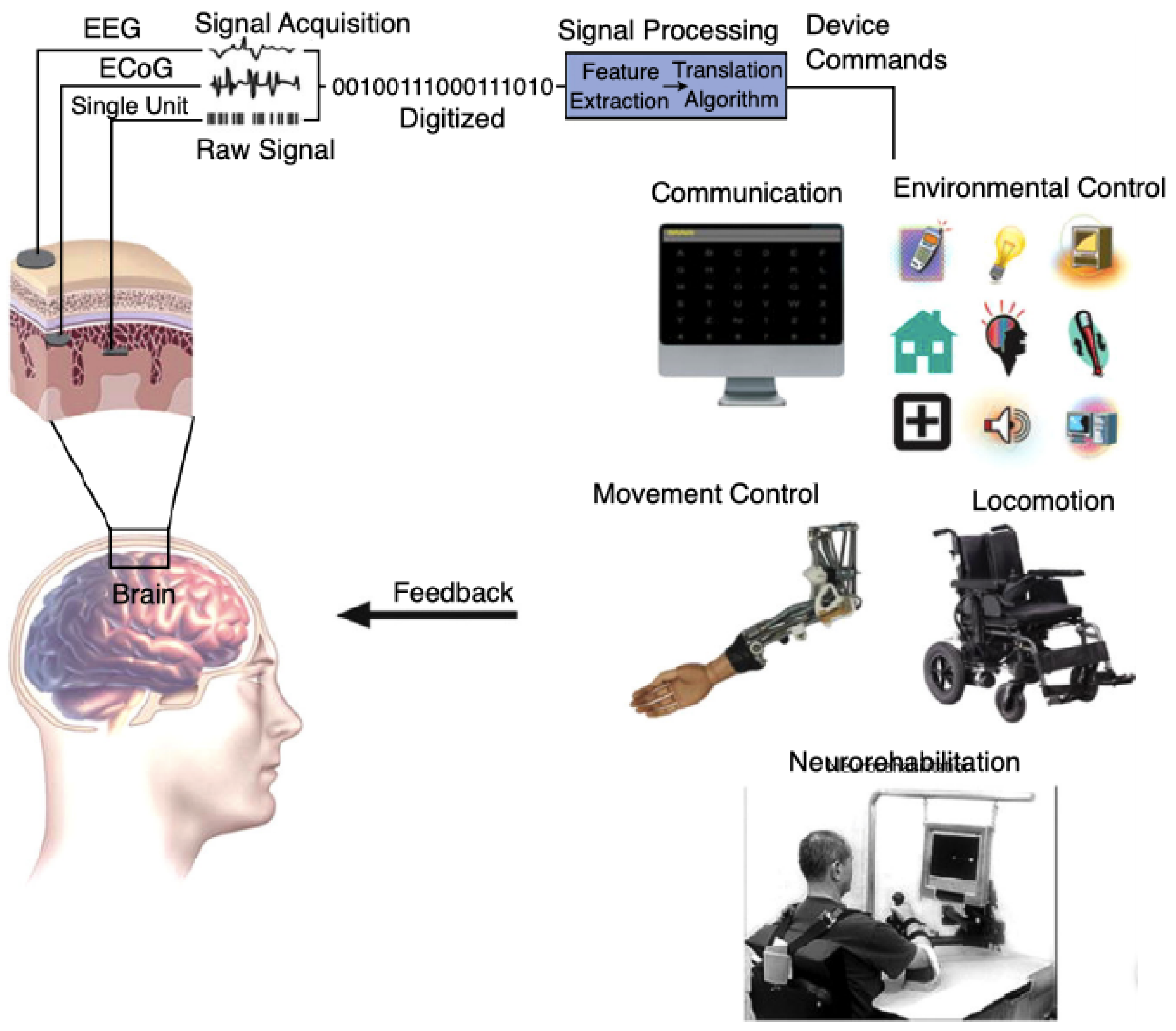Merging Minds and Machines: Recent Integrations of Brain-Computer Interfaces
Blog post by Jasmin Skinner
Despite the exponential growth in social connections observed since the creation of the internet, those that experience severe forms of paralysis continue to be isolated. Individuals suffering from conditions such as quadriplegia, locked-in syndrome or neuromuscular degenerative disease are limited in the ways they are able to interact with the world around them, often relying on the assistance of caregivers to perform their daily tasks. While those with these types of physical disabilities may lack bodily control, their brains may retain the ability to control motor functions they once had. But what if it were possible to tap into this brain activity and provide these individuals with a way to interact with the world around them, using only their thoughts?
Recent research has shown that this is possible. New and upcoming projects like Neuralink as well as researchers such as Dr. Peter-Scott Morgan, also known as the first ‘human cyborg’, have demonstrated that brain-computer interface technology is no longer science fiction, but a current reality (1). In this blog post, we consolidate some scientific research on brain-computer interfaces (BCIs), highlighting a few specific projects that have shown incredible prowess for improving accessibility for disabled and paralyzed individuals, and also looking into possible limitations and over-promised expectations.
Join us for this joint webinar series with The American Physiological Society (APS), Society for Neuroscience (SfN), Federation of European Neuroscience Societies (FENS), and the American Autonomic Society (AAS), as we cover late-breaking research, novel discovery, fundamental principles, and research innovation in the field of neuroscience. WATCH HERE
What is a brain-computer interface (BCI), and how does it work?
Prior to a discussion of the applications of a brain-computer interface, it is important to understand how exactly this futuristic technology functions. While every BCI is different, they generally all function by capturing brain activity, either directly or indirectly. After processing that information through a computer program that converts these signals into commands, an individual is able to control an external device. One of the most commonly used methods of directly measuring brain activity is through electroencephalogram (EEG) data, obtained non-invasively using small metal discs pasted onto the scalp (2).
A far more reliable but invasive method of obtaining brain activity data is through electrocorticography (ECoG), which makes use of electrodes placed directly underneath the skull, “either above (epidural) or below (subdural) the dura mater” (3). While more invasive and time consuming to set up, ECoG-based BCIs tend to require less user training and can achieve a higher level of control than EEG-based BCIs (3). However, the long-term practical use of ECoG-based and other invasive BCIs remains questionable as implanted electrodes may not be accepted by the body, potentially leading to medical complications. This is therefore why most modern iterations of BCIs utilize non-invasive methods like EEG, functional magnetic resonance imaging (fMRI), magneto-encephalography (MEG), near-infrared spectroscopy (NIRS), and functional transcranial doppler sonography (4)
Figure 1. Schematic of how a typical brain-computer interface (BCI) functions. © 2021 Kawala-Sterniuk et al., licensed under CC BY 4.0.
Neuralink: based in science or science-fiction?
One of the most notable examples of a brain-computer interface in recent months is Elon Musk’s newest project, Neuralink, which received FDA approval to begin human trials in late May 2023 (5). The mission statement of this company is to “Create a generalized brain interface to restore autonomy to those with unmet medical needs today and unlock human potential tomorrow.” The company plans to accomplish this goal through their innovative implanted EEG-based brain-computer interface, which contains very small electrodes known as “threads” implanted into the brain via a specially designed robot that will connect to an external device visible outside of the patient. This external drive will communicate the brain signals to the Neuralink app, which users will be able to control by simply imagining themselves interacting with the screen. While this technology sounds incredible, a few concerns about the science behind Neuralink have arisen. Particular concerns from previous and current employees interviewed by Reuters claim that the company is “rushing and botching surgeries, … resulting in more animal deaths than necessary” (5). Specific examples include an employee report that states that 25 out of 60 pigs were implanted with the wrong size of device, causing unnecessary animal harm. While animal death is an unfortunate inevitability of animal research, five team members who’ve worked on these experiments claim that Neuralink launches animal tests in quick succession, without addressing the issues from earlier tests or drawing complete conclusions (6).
These concerns about animal wellness are also met by a lack of peer-reviewed literature on this technology. A quick search through pubmed returns only 28 references, most of which indirectly mention the device but do not actually use it (7). Provided additional scientific literature is released as this product undergoes clinical trials, the potential for Neuralink is immense. The “threads” used in Neuralink’s electrodes are more precise than those used in deep brain stimulation (DBS), a technology also used to control brain-computer interfaces. This extreme precision highlights just how advanced this technology has the potential to be; however, future peer-reviewed studies will be needed to further validate this technology as an effective tool (7).
Has a brain-computer interface ever successfully been implemented for long-term use?
In short, yes. Some may be familiar with Dr. Peter Scott-Morgan, a brilliant scientist with a PhD in robotics and an unwavering desire to live. When diagnosed with amyotrophic lateral sclerosis (ALS), an incurable neurodegenerative disease that results in a progressive loss of muscle function, he decided to integrate and replace his failing body parts with machinery. Through a variety of surgeries, including the first ever “triple-ostomy” (8) and a laryngectomy, which allowed him to breathe without using muscle control, he became the first ever “Human Cyborg”. While this laryngectomy would prevent him from speaking naturally, Dr. Scott-Morgan recorded twenty thousand words to be used in a synthetic voice program, which would accompany an avatar able to show facial expressions when his own muscles would no longer allow. This incredible technology was controlled by an eye-tracking computer program that would allow him to control his movements and communicate through this avatar. While Scott-Morgan did eventually succumb to the progression of ALS, his legacy of unrelenting positivity and incredible ingenuity live on, providing a technological hope for future ALS or other “locked-in” patients (9).
While the story of Dr. Scott-Morgan is likely the most extreme example of a brain-computer interface, research efforts are still underway to provide independence to those experiencing paralysis and debilitating disabilities. Companies such as Emotiv and NeuroSky have already begun selling EEG- and ECG-based biosensory monitoring devices, which, while appearing to be excellent at capturing brain activity, predominantly highlight the products’ wide applications for brain monitoring. While some actual functionality of these portable EEG-measuring devices is mentioned, it appears that the consumer market is still waiting for a truly integrated brain-computer interface.
Conclusions and future directions
While brain-computer interface technology has advanced rapidly throughout the last several years, it is still far from perfect. Most brain-computer interfaces available for purchase target the neuroscientist and don’t necessarily provide an integrated and easy-to-use technology for those that need it most. Additionally, the costs of these instruments are exorbitant and remain a barrier for the vast majority of disabled people. Future efforts to develop a practical brain-computer interface are needed to make this technology usable and accessible for disabled people, which Neuralink and other similar companies will hopefully be able to address as they refine their technology.
About the Author
About the Author

Jasmin Skinner is an undergraduate student at the University of Western Ontario completing a Specialization in Biology and a Minor in Chemistry, with focused interest in applying these concepts to environmental conservation. As a lover of the outdoors and the arts, much of her time is spent in nature and within the local London art community, creating and connecting with all walks of life. After graduating, she hopes to continue her passion of finding unconventional solutions to environmental issues by working with nature, not against it.
References
- Kawala-Sterniuk A, Browarska N, Al-Bakri A, et al. Summary of over fifty years with brain-computer interfaces–a review. Brain Sci. 2021;11(1):43. doi: 10.3390/brainsci11010043
- Electroencephalogram (EEG) [Internet]. [place unknown]: Johns Hopkins Medicine; [date unknown]; [cited 2023 June]. Available from: https://www.hopkinsmedicine.org/health/treatment-tests-and-therapies/electroencephalogram-eeg#:~:text=An%20EEG%20is%20a%20test,activity%20of%20your%20brain%20cells
- Schalk G, Leuthardt EC. Brain-computer interfaces using electrocorticographic signals. IEEE Reviews in Biomedical Engineering. 2011;4:140-154. doi: 10.1109/RBME.2011.2172408
- Admin. Brain computer interface (BCI) system overview & applications [Internet]. [place unknown]: How to!Electronics; 2023 May [cited 2023 June]. Available from: https://how2electronics.com/brain-computer-interface-system-overview-applications/
- Levy R, Taylor M, Sharma A. Elon Musk’s Neuralink wins FDA approval for human study of brain implants [Internet]. [place unknown]: Thomson Reuters; 2023 May [cited 2023 June]. Available from: https://www.reuters.com/science/elon-musks-neuralink-gets-us-fda-approval-human-clinical-study-brain-implants-2023-05-25/
- Levy R. Exclusive: Musk’s Neuralink faces federal probe, employee backlash over animal tests [Internet]. [place unknown]: Thomson Reuters; 2022 Dec [cited 2023 June]. Available from: https://www.reuters.com/technology/musks-neuralink-faces-federal-probe-employee-backlash-over-animal-tests-2022-12-05/
- Fiani B, Reardon T, Ayres B, Cline D, Sitto SR. An examination of prospective uses and future directions of neuralink: the brain-machine interface. Cureus. 2021;13(3):e14192. doi: 10.7759/cureus.14192
- Russell T, Paul D, Scott-Morgan P, et al. Thriving, not just surviving, with motor neurone disease. The outcome of the first pre-emptive ‘triple-ostomy’. Oxf Med Case Reports. 2019;10:451-3. doi: 10.1093/omcr/omz109
- Orlean S. The man who would be a machine [Internet]. [place unknown]: The New Yorker; 2022 July. Available from: https://www.newyorker.com/news/afterword/the-man-who-would-be-a-machine

